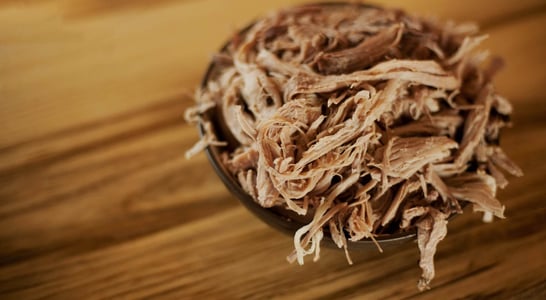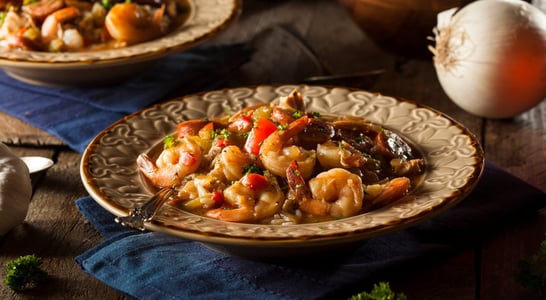
National Farmers Day
Without farmers, we’d all starve. Visit a farmer’s market, take a trip to a farm, or reenact how farmers used to live and grow with old-fashioned tools.
Some might say that modern society was built upon the rugged shoulders and stubborn personalities of farmers from around the world. Because without those who dedicate their lives to growing food, where would everyone else be?
So, it only makes sense that a time should be set aside to celebrate their contributions and all that they have provided (and indeed continue to provide) to the world. National Farmers Day intends to do just this!
How to Celebrate National Farmers Day
Celebrating National Farmers Day can take on a few different forms but may partially depend on where a person lives.
Have some fun making plans and celebrating these salt of the earth folks with some of these ideas:
Thank a Farmer
One of the best ways to celebrate National Farmers Day would be to begin by thanking a farmer!
For those who live in a rural community, this might just mean visiting a friend who is a farmer and wishing them a happy National Farmers Day! Or, head on over to a local farmers market in the area and let the growers there know how much their hard work and effort is appreciated on this important day.
Visit a Working Farm
Those who live in or near the country might want to observe National Farmers Day by participating in activities that reenact the ancient methods of farming before the invention of electricity and modern equipment.
Throughout the US, many different communities can be found that allow visitors to get a glance into the past, including places like:
- Conner Prairie Farm in Fishers, Indiana
- Living History Farm in Urbandale, Iowa
- Oliver Kelley Farm in Elk River, Minnesota
- Howard County Living Farm Heritage Museum in West Friendship, Maryland
Join in on Farming Events and Activities
Many times, a state fair is a place where farmers will join together to show off their produce or animals.
There may even be some local festivals to attend that are centered around local produce like a pumpkin festival, a corn festival or an apple festival. These types of gatherings are often places where a variety of types of local farmers can be found.
City dwellers can choose to celebrate National Farmers Day by taking a trip to a rural area and visiting a local farmers’ market. There is no doubt that the fruits and vegetables encountered alone should make up for the drive!
History of National Farmers Day
Due to the fact that farmers have been honored for centuries, the roots of this day are likely to go back very far and with a wide variety of traditions!
Many different countries have set aside dates for celebrating National Farmers Day at different times of the year. For instance, in India and Pakistan a day for farmers is celebrated in December, while South Korea celebrates in November and Zambia in October.
In the United States, some people have celebrated a time in late October as “Old Farmer’s Day”, with a festival located in Loranger, Louisiana that reenacts the farmers’ way of life from before technology changed it so much.
Other communities may host their own events and activities that offer a nod to the important work that farmers do to put food on the table of families everywhere.
National Farmers Day offers a delightful time in the harvest season of the autumn to show some appreciation and love for those folks who toil and work to provide food for those in the communities around them.
Whether celebrating small micro farmers who grow or local organic dairy farmers, this is an ideal opportunity to make a big deal out of something so important as farmers!
Learn Interesting Facts About Farming
National Farmers Day is a perfect time to brush up on some facts and statistics related to the appreciation of farming. Check out some of these:
-
Around 97% of farms in the US are family owned and operated.
-
In 2019, more than 22 million US jobs were related to agriculture and food.
-
Only 2% of the American population are the farmers who feed everyone else!
National Farmers Day FAQs
What are some ancient harvest traditions associated with Old Farmer’s Day?
In ancient England, “Harvest Home” marked the end of the harvest season with singing, dancing, and decorating villages with boughs.
The final sheaf of corn was often crafted into a “corn dolly,” symbolizing the spirit of the field, to be kept for good luck until the next planting season.
How did the term “Lammas Day” influence harvest celebrations?
“Lammas Day,” observed on August 1st, signified the start of the wheat harvest in medieval England.
The name derives from “loaf mass,” as farmers baked bread from the new crop to offer in church ceremonies, blending agricultural practices with religious traditions.
Are there any humorous myths related to farming?
A popular myth suggests that “cow tipping,” the act of pushing over a sleeping cow, is a common rural pastime.
In reality, cows sleep lying down and are sensitive to their surroundings, making this nearly impossible and more of a humorous urban legend than a real activity.
How do different cultures celebrate harvest festivals similar to Old Farmer’s Day?
In South Korea, “Chuseok” is a major harvest festival where families gather to share food and honor ancestors.
Similarly, in Zambia, the “N’cwala” festival celebrates the first fruits of the harvest with traditional dances and ceremonies, reflecting a global appreciation for agricultural cycles.
What are some misconceptions about modern farming practices?
A common misconception is that most farms are large corporate operations. In reality, over 97% of U.S. farms are family-owned, highlighting the enduring legacy of family farming in modern agriculture.
How has technology transformed traditional farming celebrated on Old Farmer’s Day?
Modern farmers have embraced technology, utilizing GPS-guided equipment, drones for crop monitoring, and precision agriculture techniques to enhance efficiency and sustainability, a significant evolution from the manual methods of the past.
What role do urban farms play in today’s agricultural landscape?
Urban farms have emerged in cities worldwide, converting rooftops and vacant lots into productive agricultural spaces.
These initiatives bring fresh produce to urban communities and reconnect city dwellers with farming practices, embodying the spirit of Old Farmer’s Day in modern settings.
Are there any unique festivals in the U.S. that honor traditional farming methods?
Yes, in Loranger, Louisiana, an Old Farmer’s Day festival reenacts pre-mechanization farming techniques, including sheep shearing, blacksmithing, and traditional biscuit making, offering attendees a hands-on experience of historical agricultural practices.
How do farmers’ markets contribute to preserving farming traditions?
Farmers’ markets provide a direct link between consumers and local producers, allowing farmers to sell their goods directly and share knowledge about traditional farming methods, thus preserving and promoting agricultural heritage within communities.
What are some lesser-known crops that were historically significant to early farmers?
Crops like amaranth and spelt were staples in ancient civilizations.
Amaranth, once a major crop of the Aztecs, is valued for its nutritional benefits, while spelt, an ancient grain, has seen a resurgence due to its rich flavor and health benefits, reflecting the diverse agricultural practices honored on Old Farmer’s Day.
See what else is happening…
There’s always more going on every month at Days Of The Year. Here are our favorites this month!
Also on ...
View all holidaysNational Pulled Pork Day
Gather friends and family and make pulled pork together, a delicious and filling cut of meat is sure to please, or go out and enjoy professionally made pulled pork.
We think you may also like...
Crackers Over The Keyboard Day
Tip your computer keyboard over and gently tap all around it in order to see what kinds of nasty crumbs, eraser shavings, and who knows what else falls out.
Fairtrade Fortnight
Supporting Fairtrade, means contributing to a more sustainable and equitable global market. Plus, you get to enjoy some delicious products!








